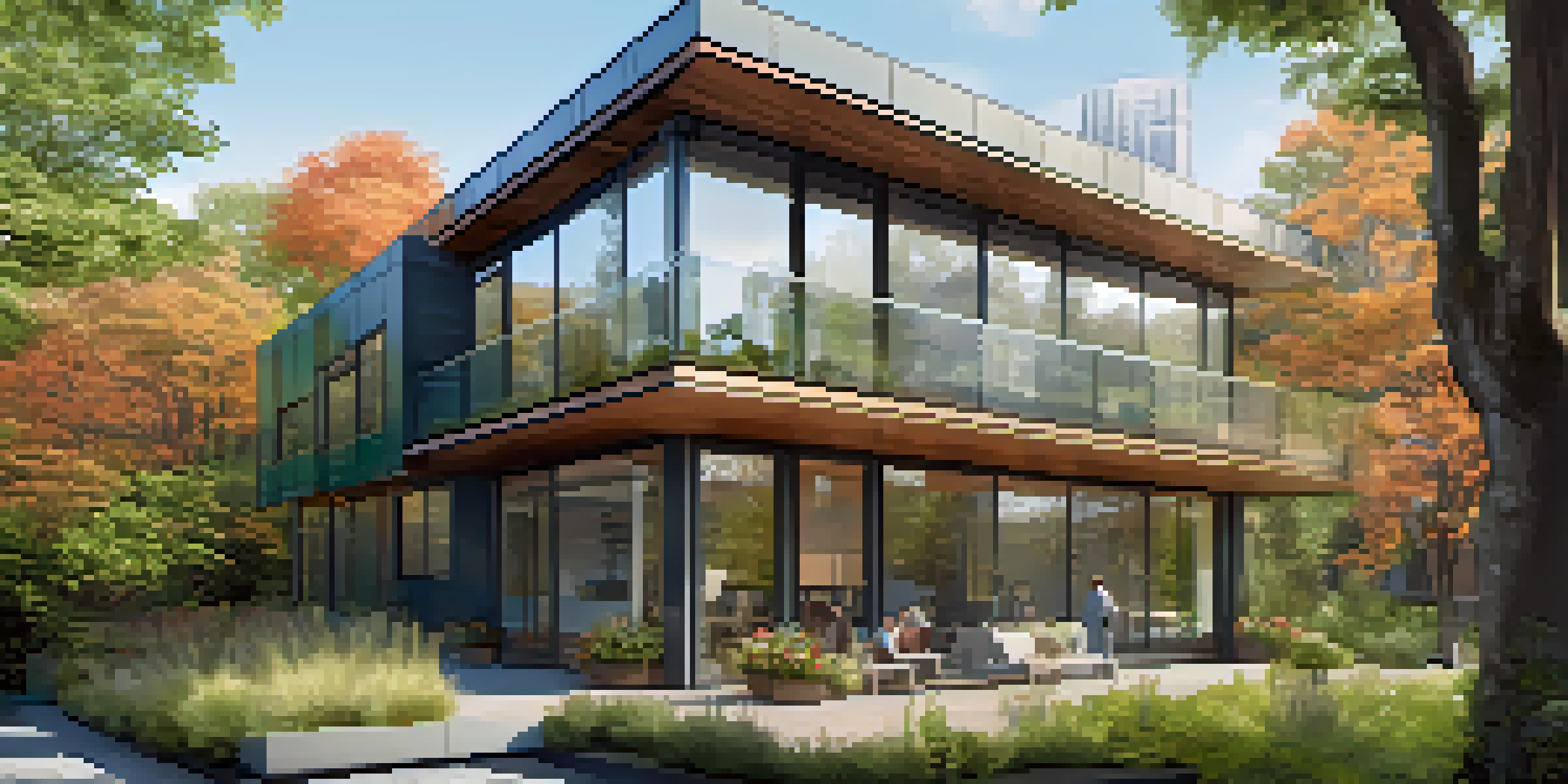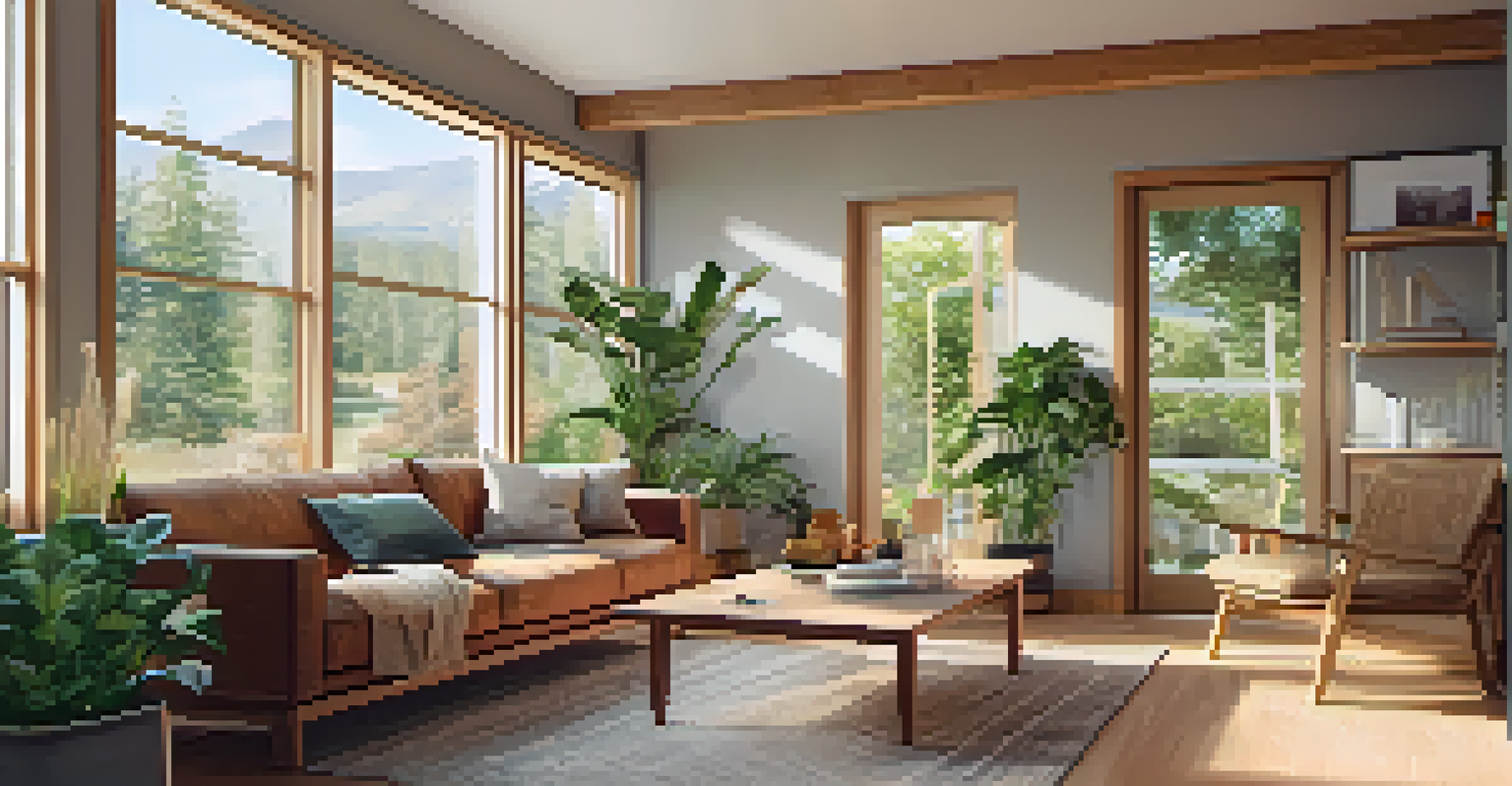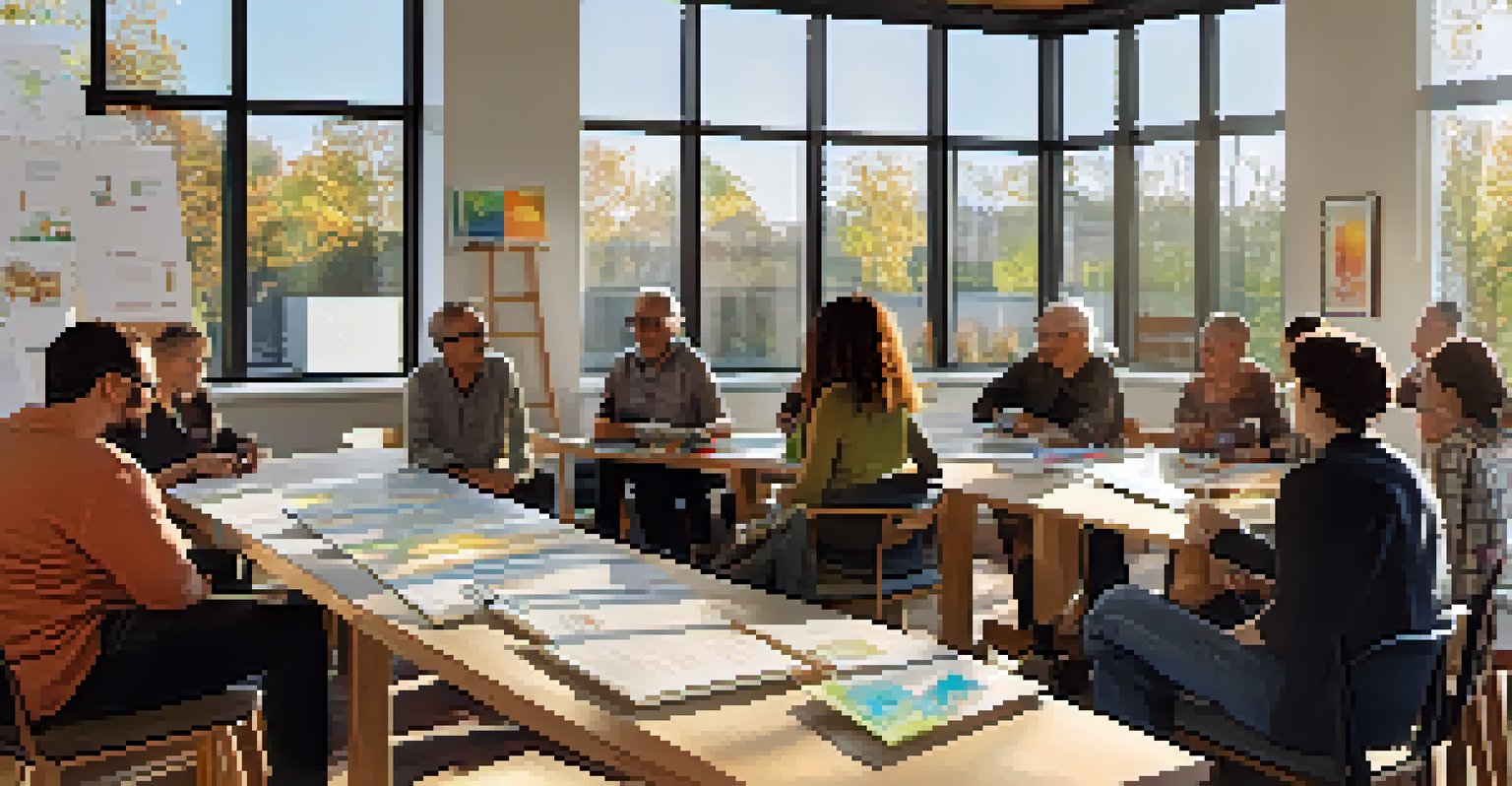Exploring Passive House Design in New York City Projects

Understanding Passive House Principles and Standards
Passive House design is a building standard that focuses on energy efficiency, comfort, and sustainability. It emphasizes a high level of insulation, airtightness, and the use of renewable energy sources. This approach not only reduces energy consumption but also enhances indoor air quality and comfort for occupants.
The ultimate goal of building design is to create a sustainable environment with energy efficiency and occupant comfort in mind.
The core principles of Passive House include superinsulation, thermal bridge-free construction, and superior airtightness. These elements work together to create a building envelope that maintains a stable indoor climate with minimal energy input. For instance, a well-designed Passive House can maintain a comfortable temperature throughout the year without relying heavily on traditional heating or cooling systems.
In New York City, where energy costs can be high and space is limited, adopting Passive House standards presents a viable solution for sustainable urban living. This design philosophy aligns perfectly with the city's ongoing efforts to reduce carbon emissions and combat climate change.
The Benefits of Passive House Design in Urban Settings
One of the most significant benefits of Passive House design is its potential for energy savings. Buildings constructed to these standards can cut energy consumption by up to 90% compared to conventional buildings. This drastic reduction not only lowers utility bills for residents but also contributes to a more sustainable urban environment.

Moreover, Passive House buildings often provide superior indoor comfort due to their consistent temperatures and minimal drafts. For example, a family living in a Passive House can enjoy a cozy home in winter without the chilling drafts common in older buildings. This comfort can lead to improved quality of life and increased well-being for occupants.
Energy Savings with Passive House
Passive House design can reduce energy consumption by up to 90%, leading to lower utility bills and a more sustainable urban environment.
Additionally, many Passive House projects incorporate healthy materials and ventilation systems that improve indoor air quality. This focus on health is especially important in densely populated cities like New York, where air pollution can significantly impact residents' well-being.
Notable Passive House Projects in New York City
New York City has embraced Passive House design in various projects, showcasing its versatility and effectiveness. One notable example is the 'Passive House at 2116-2118 New York Avenue,' a multifamily residence in Brooklyn that achieved the Passive House standard while providing affordable housing. This project illustrates how sustainable design can also address pressing social issues.
Sustainability is not a trend; it is a responsibility we have to the future generations.
Another remarkable project is the 'Greenpoint Landing,' a waterfront development designed with sustainability in mind. This initiative incorporates Passive House principles, emphasizing energy efficiency while enhancing the overall community environment. It serves as a model for future developments aiming to balance urban growth with ecological responsibility.
These projects not only highlight the feasibility of Passive House design in urban settings but also inspire other developers and architects to consider similar approaches in their future endeavors.
Challenges of Implementing Passive House in NYC
Despite its many advantages, implementing Passive House design in New York City comes with challenges. One of the primary hurdles is the city's existing building codes and regulations, which can be stringent and slow to evolve. Navigating these regulations while ensuring compliance with Passive House standards can be a complex process for developers.
Additionally, the high cost of construction in NYC may deter some builders from pursuing Passive House projects. While the long-term savings on energy bills often outweigh initial investments, upfront costs can be a barrier for many. This financial consideration is crucial in a city where budgets are constantly tight.
Comfort and Indoor Air Quality
Buildings designed to Passive House standards provide a consistently comfortable indoor climate and improved air quality, enhancing the well-being of occupants.
Lastly, the need for skilled labor familiar with Passive House techniques is another significant challenge. Training workers to implement these specialized construction methods is essential for the success of future projects, but it requires time and resources.
The Role of Government Incentives in Promoting Passive House
Government incentives play a critical role in promoting Passive House design throughout New York City. Programs and tax credits aimed at encouraging energy-efficient building practices can significantly offset construction costs. These incentives make it easier for developers to consider Passive House standards in their projects.
Furthermore, the city's commitment to sustainability and reducing greenhouse gas emissions has led to increased funding for green building initiatives. By aligning financial support with the goals of the Passive House movement, the government can help foster a culture of energy efficiency across the city.
As more projects gain traction and demonstrate the benefits of Passive House design, it’s likely that additional policies will emerge, further encouraging sustainable building practices in New York City.
Community Engagement in Passive House Projects
Community engagement is vital for the success of Passive House projects in New York City. Involving residents in the planning and design process helps ensure that the projects meet the needs of those who will live there. This collaborative approach fosters a sense of ownership and pride among community members.
Public forums, workshops, and informational sessions can help demystify the concept of Passive House design for residents. By educating the community on the benefits of energy-efficient living, developers can build support for their projects and encourage widespread adoption of these sustainable practices.
Community Engagement is Essential
Involving residents in the planning process of Passive House projects fosters a sense of ownership and ensures the designs meet community needs.
Additionally, successful community engagement can lead to innovative design solutions that are tailored to the unique characteristics of each neighborhood. This localized approach not only enhances the project's success but also strengthens community ties.
The Future of Passive House Design in NYC
As New York City continues to grapple with climate change and rising energy costs, the future of Passive House design looks promising. With increasing awareness of sustainability and energy efficiency, more developers and architects are likely to adopt these principles in their projects. This shift can lead to a significant transformation in how the city approaches housing and commercial development.
Technological advancements will also play a crucial role in the evolution of Passive House design. Innovations in building materials, construction techniques, and renewable energy sources will make it easier and more cost-effective to implement these standards. For instance, the use of advanced insulation materials can further enhance energy efficiency while reducing construction time.

Ultimately, the growing trend toward Passive House design in New York City has the potential to create healthier, more sustainable urban environments. As the city embraces this approach, it can serve as a model for other urban centers looking to reduce their carbon footprints and improve the quality of life for their residents.